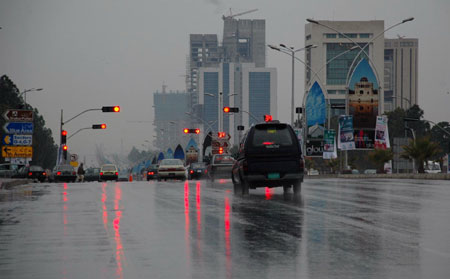Aquaplane: The hidden danger of driving in rain
It’s been continuously raining for the past few days and Lahore has been reflecting Venice as you step out on roads. In fact, you can’t tell where the road is, it’s just a stream of water flowing across the whole city. While driving in 2-3 feet water may seem the job for 4×4 enthusiasts who go river crossing for fun, there’s more to it than just water getting into your engine block causing hydrolocking, which occurs when cylinders take up water through air intake and end up bending connecting rods as the water can’t be compressed easily. So hydrolocking is more likely to occur in deep waters, but there’s something else which is related to handling, known as Aquaplaning.
What is Aquaplaning?
As the name suggests, Aquaplaning is the building up of a plane or layer of water between the road and tires. Now what normally happens when you drive in rain is that tires come in contact with water, tear through it, and leave behind all of it, keeping direct contact with road all the time. At higher speeds, when the rate of water coming in contact with the tire becomes greater than that it leaves behind, the extra water starts accumulating between the tire and the road, hence interrupting the tire’s direct contact with road and causing it to lose traction. For cars traveling on asphalt, the lowest depth of water on which aquaplaning can occur is ~3mm.
Factors causing Aquaplaning:
The basic cause for this to occur is the surface tension of water, which is the force required to tear through the surface of any liquid. During aquaplaning, the tire encounters more water than it can dissipate and hence it sort of climbs over the water surface, leaving the road contact. Moreover, wider, smaller tires are more likely to encounter aquaplaning than bigger, thinner tires. Also, the tread plays a vital role, and it’s worn out, the chances of aquaplaning are higher.
When to be careful?
The conditions under which aquaplaning is more likely to occur are still water on road, high speed and carelessness. Especially when a sudden patch of still water comes into way on a road at a high speed; under this condition, the front wheels are more likely to aquaplane, however, the rear wheels are never fully exempted.
How to figure out it’s happening?
The symptom that a car is aquaplaning is skidding, the driver will feel a loss of traction and steering, and as a result, the car may spin into an unwanted direction.
How to recover from Aquaplaning?
Keeping calm, easing off the accelerator, avoiding sudden braking and keeping it stable by counter steering the skid can help you regain traction and avoid any major accidents. Drive sane and enjoy the rain!


